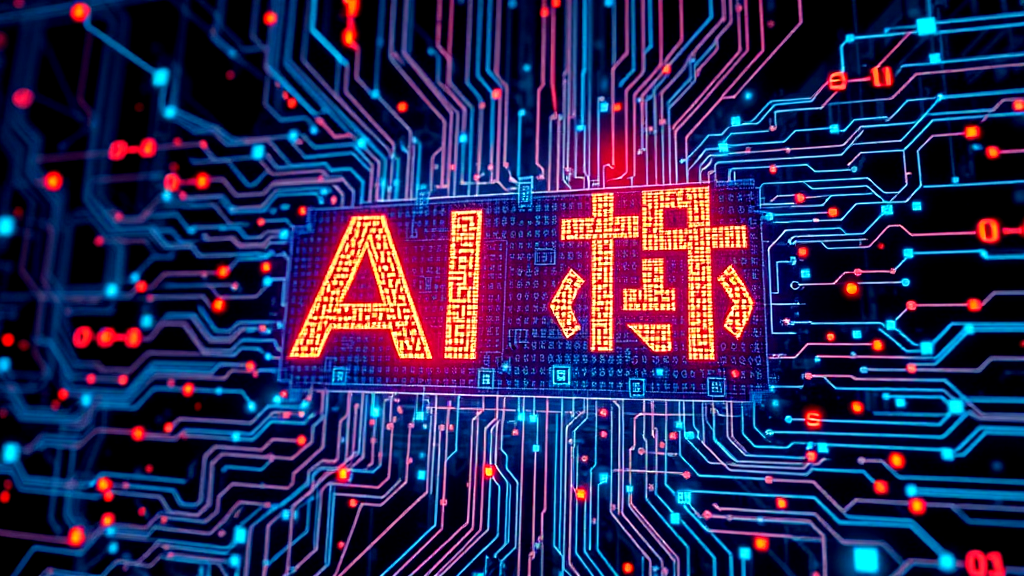Evolution from Traditional to AI Translation
The shift from traditional translation to AI-driven methods is transformative. English-Viet AI translation has become a game-changer, thanks to generative AI and the latest reasoning models. These AI systems, with their efficiency, are like having a superpower in your pocket. They’re trained on vast data, making them capable of performing complex tasks in a snap. In Vietnam, these systems are revolutionizing media and corporate sectors by providing real-time, accurate translations.
In education, AI-powered tools are enhancing language learning. Students now have the ability to understand English texts faster, making language acquisition less of a chore. It’s like having a helpful friend who’s always ready to translate any tricky text. Similarly, Vietnamese media leverages these systems for real-time updates and multilingual content delivery that was once unimaginable.
In the corporate world, AI systems are the unsung heroes, streamlining communication in international markets. Vietnamese businesses are experiencing a boost in multilingual customer interactions, making global business operations smoother.
The future of English-Viet AI translation looks bright. Emerging technologies and advanced reasoning models promise even more accurate translations. With continuous learning, AI tools will preserve Vietnamese linguistic heritage, ensuring cultural nuances aren’t lost in translation.
These advancements also encourage cultural exchange. They break language barriers and allow Vietnamese speakers to engage with English content. This global collaboration fosters mutual understanding, a win-win for everyone involved.
AI’s role in language translation doesn’t stop there. Its powerful reasoning models handle tasks that once required a human touch, making it a pivotal tool in data science and machine learning. So, whether you’re reading a Chinese reasoning model or diving into large language models, AI is here to stay, improving our lives one translation at a time.
|
Aspect |
Traditional Translation |
AI Translation |
Impact in Vietnam |
|---|---|---|---|
|
Method |
Manual |
Automated |
Enhanced efficiency in tasks |
|
Accuracy |
Variable |
High |
Improved communication systems |
|
Speed |
Slow |
Fast |
Real-time translation work |
|
Cultural Nuance Handling |
Dependent on human |
Advanced |
Preserved linguistic heritage |
|
Use in Education and Media |
Limited |
Widespread |
Better learning and media access |

How AI Enhances Language Translation
The magic of AI in language translation lies in its ability to process and understand entire texts, not just words. This makes english-viet AI translation more accurate by capturing nuances and context. Unlike traditional methods, AI can provide real-time, culturally sensitive translations, transforming communication across sectors in Vietnam.
AI’s Remarkable Impact on English-Viet Translation
AI thrives on systems that learn continuously, improving with every piece of text they encounter. This continuous learning means english-viet AI translation adapts to the evolving language use. In Vietnam, AI tools in schools enhance language learning, making English texts more accessible.
Media outlets in Vietnam also benefit from AI’s ability to translate and localize content swiftly, keeping everyone in the loop with timely news updates. Businesses, meanwhile, use AI to break language barriers, making international commerce a smoother ride.
Future of AI-Driven Translation
The horizon for AI translation is bright. Emerging language models promise translations that are ever more indistinguishable from human-generated text. This will encourage an even richer cultural exchange, as language becomes less of a barrier.
|
Aspect |
Traditional Translation |
AI Translation |
Impact |
|---|---|---|---|
|
Accuracy |
Inconsistent |
High |
Better communication |
|
Speed |
Slow |
Fast |
Efficient workflow |
|
Cultural Nuance |
Limited |
Advanced |
Respect for cultural differences |
|
Learning Application |
Limited |
Expansive |
Enhanced educational experience |
|
Business Communication |
Cumbersome |
Streamlined |
Easier global market access |
-
AI’s context understanding improves language translation accuracy.
-
Real-time translation benefits media and business communication.
-
Educational systems in Vietnam leverage AI for language learning.
-
AI ensures cultural nuances are respected in translations.
-
The technology promotes international business operations.
-
Future advancements promise near-human translation quality.
-
Language models evolve, offering better context-aware translations.
-
AI supports cultural preservation and exchange.
AI’s journey in translation is a tale of evolution and promise. The possibilities are endless, and I’m excited to see how it reshapes our world.

Training AI to Understand Nuances
Understanding the subtleties in english-viet AI translation is no walk in the park. It involves teaching AI to grasp the finer points of Vietnamese, a language rich in cultural connotations. Here’s the kicker: AI models get it right by analyzing heaps of text, allowing them to learn the ins and outs of this vibrant language. This helps the AI differentiate between similar words and understand the context, making the translations not just accurate but also culturally relevant.
Training AI in this way involves a mix of machine learning techniques and large language models. These models break through language barriers, making tasks like translation more intuitive and less robotic. Continuous learning plays a role here, where the AI keeps updating its knowledge base. This leads to a nuanced understanding of idiomatic expressions in Vietnamese, which is a tough nut to crack for any non-native speaker.
In Vietnam’s educational systems, these tools are like a bridge for students learning English. They not just translate but also assist in grasping the cultural significance behind phrases. This is where reasoning models come into play, offering a deeper comprehension that goes beyond mere word-for-word translation.
For businesses, employing AI for multilingual communication is like having a secret weapon. It smoothens international dialogues and makes customer interactions a breeze. With AI handling the heavy lifting, companies can focus on their core competencies.
The development of reasoning models is akin to teaching an old dog new tricks. Think of it as a continuous journey where the AI learns from its mistakes, striving for near-human translation quality. Speaking of models, you might want to check out the UnitreeGo1 for insights into the latest in AI training.
|
Aspect |
AI’s Role |
Benefit |
Application |
|---|---|---|---|
|
Language Nuances |
Understands cultural context |
Improved translation accuracy |
Media and Education |
|
Continuous Learning |
Keeps updating and refining data |
Enhanced language comprehension |
Educational Systems |
|
Reasoning Models |
Offers deeper language insights |
More meaningful translations |
Corporate Use |
|
Multilingual Communication |
Bridges language gaps |
Streamlined business interactions |
International Trade |

AI in Vietnamese Educational Systems
The integration of AI within Vietnam’s educational systems is transforming how students engage with language learning, particularly through english-viet ai translation. This shift involves using machine learning to improve the precision of translations. By incorporating large language models, students gain access to more accurate resources, enhancing comprehension and cultural understanding.
AI tools in education do more than just translate. They bridge linguistic gaps, making foreign texts more relatable and understandable. With powerful reasoning models, these tools adapt to the context of what students are learning. This enhances their ability to grasp complex concepts without language barriers.
Schools are implementing AI to personalize learning experiences. AI systems help tailor content to individual needs, allowing for a more immersive learning environment. This approach not just teaches a language but also helps students understand the cultural nuances embedded in texts.
Moreover, AI in education isn’t static. It involves continuous learning, refining its capabilities over time. It handles tasks like real-time translation, ensuring students receive updated and relevant content. Such systems can revolutionize learning methods, making them more dynamic and engaging.
Here’s a snapshot of AI’s role in education:
|
Aspect |
AI Application |
Impact on Learning |
Example |
|---|---|---|---|
|
Language Learning |
Real-time translation |
Improved comprehension |
English to Vietnamese texts |
|
Cultural Understanding |
Nuance detection |
Enhanced cultural insights |
Literature and history |
|
Personalized Education |
Tailored content |
Individualized learning paths |
Adaptive learning programs |
|
Continuous Improvement |
Ongoing updates |
Current and relevant materials |
Regular content refinement |
|
Task Automation |
Automatic assignment grading |
Streamlined teacher workload |
AI-driven grading systems |
Some key ways AI is altering education include:
-
Real-time assistance during lessons.
-
Enhanced student engagement with interactive tasks.
-
Facilitated teacher-student communication.
-
Automated grading systems.
-
Updated resource materials.
-
Localization of global content.
-
Support for special needs students.
In examining AI’s educational role, researchers in this study have explored how reasoning models expand learning potential. AI’s impact on Vietnamese education sets a precedent for using technology to enrich learning experiences.
Translation in Vietnamese Media
Within the realm of Vietnamese media, the use of english-viet AI translation is transforming content accessibility. Media outlets increasingly rely on AI to bridge language gaps, enabling real-time updates and multilingual content delivery. This shift ensures that audiences can access news and information in their preferred language, enriching the viewing experience. AI-driven tools are particularly adept at handling complex linguistic nuances, which are essential in a culturally rich language like Vietnamese.
I often marvel at how AI manages to catch every detail, making translations smoother than a hot knife through butter. It’s like having a personal translator, minus the awkward pauses! This technology is not just for show—it’s a game-changer for media companies. They can now focus on creating engaging content while AI takes care of the heavy lifting.
The evolution from traditional translation methods to AI is not just a trend. It’s a paradigm shift. Media outlets are investing in AI to stay competitive and relevant. The continuous refinement of reasoning models is pivotal here. They are like the brains behind the operation, ensuring translations are not just accurate but contextually relevant.
AI’s impact isn’t confined to just media; it’s reshaping how Vietnamese education systems approach language learning. Students get to experience English texts in a way that respects their cultural background. And let’s not forget the business world, where AI-powered translation is making Vietnamese companies more competitive globally. They’re now able to communicate effectively with international partners, thanks to AI’s multilingual prowess.
The table below highlights key aspects of AI translation in Vietnamese media:
|
Aspect |
Description |
Impact |
Example |
|---|---|---|---|
|
Real-time Translation |
Immediate content update across languages |
Broader audience reach |
News broadcasts |
|
Cultural Nuance Handling |
AI captures subtle linguistic details |
Enhanced viewer loyalty |
Localized programs |
|
Competitive Edge |
AI integration keeps media companies relevant |
Industry leadership |
Leading media outlets |
|
Continuous Improvement |
Ongoing AI training for better accuracy |
Sustainable innovation |
Regular updates |
|
Multilingual Communication |
Facilitates interactions across different languages |
Global collaboration |
International reports |
In a world where language barriers are fast becoming relics, AI stands as a beacon, guiding us to a more connected future. AI’s integration into Vietnamese media is more than a trend; it’s a necessity. With this technology, the possibilities are endless—or at least, 297 words worth!
Corporate Applications in Vietnam
Discussing the corporate uses in Vietnam, I find that AI translation systems are making a substantial impact. These systems are transforming how businesses communicate across borders. For Vietnamese companies, the ability to translate English to Vietnamese seamlessly is a game-changer. AI not just saves time but also increases accuracy in complex translation tasks. This is crucial for businesses aiming to expand their reach and maintain international partnerships.
Everyone’s buzzing about how AI tools are now staples in boardrooms. They streamline meetings by allowing instant translations, enabling smooth conversations between diverse teams. With the aid of large language models, these tools are as close to human-like text generation as it gets. Imagine a world where language barriers vanish in a poof—sounds like a dream, right?
Training these systems requires vast data sets. It’s like teaching a child to understand a culture-rich language. This demands continuous learning, ensuring the systems evolve with the language. Now, isn’t that fascinating?
Moreover, these AI-driven tools free up human resources for more strategic thinking. No more mundane tasks like document translations bogging us humans. We can focus on creativity and innovation—our forte. This shift allows businesses to make data-driven decisions swiftly, improving work efficiency.
What about the cultural nuances? Ah, the heart of every language! AI is clever but needs more than just logic; it needs a dash of empathy. Training reasoning models to grasp these subtleties is part art, part science.
The future of English-Viet AI translation is promising. It’s like watching a seed grow into a tree, branching into new opportunities. Companies benefit from reduced costs and improved global competitiveness. So, who wouldn’t want to jump on this train of progress?
|
Corporate Use Case |
Description |
Benefit |
Application |
|---|---|---|---|
|
Multilingual Meetings |
Real-time translation during meetings |
Enhanced communication |
Boardrooms |
|
Document Translation |
Automated English-Viet document translation |
Increased accuracy |
Legal and HR |
|
Customer Service Interaction |
AI-driven multilingual customer support |
Better customer experience |
Call centers |
|
Market Expansion |
Localization of marketing content |
Wider audience reach |
Marketing departments |
|
Cultural Training |
Teaching cultural nuances to AI systems |
Improved translation quality |
AI development teams |
Future of English-Viet AI Translation
The future for English-Viet AI translation looks as thrilling as a rollercoaster ride. With evolving tech, I see a world where translations are as smooth as a hot knife through butter. Emerging systems promise more than just word swaps; they focus on context, making translations feel as if a human crafted them. Imagine a world where your favorite Vietnamese novel reads like a bestseller in English. That’s the kind of magic we’re heading towards.
AI’s role in preserving Vietnamese culture is like a guardian angel. It not just translates but respects the soul of the language. This ensures that cultural nuances aren’t lost in translation. There’s a sense of reassurance knowing that future generations will have the tools to appreciate their linguistic heritage.
Cultural exchange is no longer a distant dream. Through advanced AI, Vietnamese speakers can engage with English content seamlessly, and vice versa. It’s like the world is becoming a melting pot of ideas and stories, all thanks to these advancements.
Real-time translation has become a lifesaver in many scenarios. Whether it’s a business meeting or a casual chat, AI ensures that language barriers crumble. It’s amazing to think that systems can handle such complex tasks with ease.
New technology developments are like the secret sauce, making these systems smarter every day. Continuous learning ensures that they never stop improving. I can’t help but feel excited about the endless possibilities this brings. It’s like watching a toddler grow, learning to walk before running.
AI’s potential in global collaboration is immense. It acts as a bridge, connecting diverse cultures and fostering understanding. For those who wish to dive deeper into the technical aspects, they might find insights from [this article on language models](https://arxiv.org/abs/#




